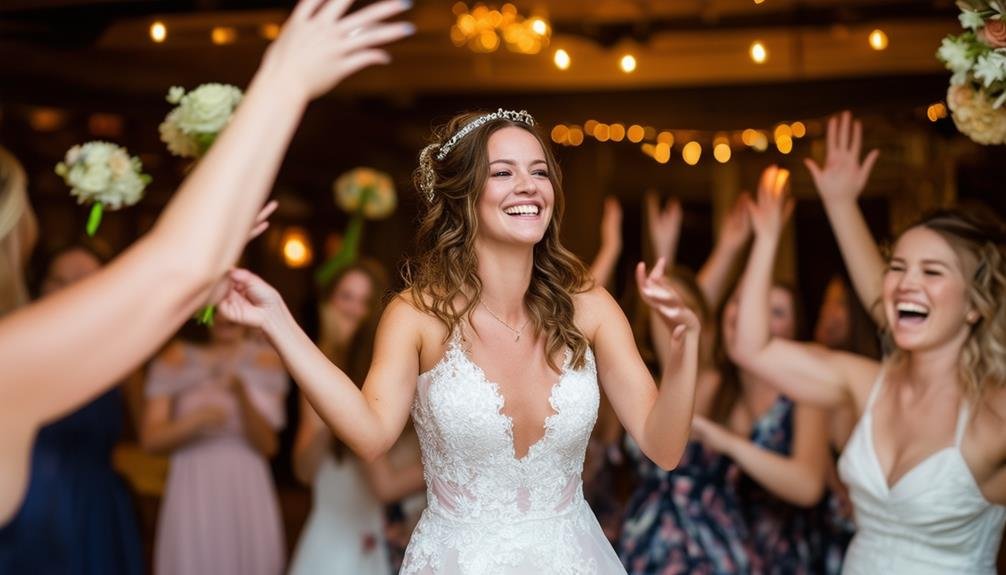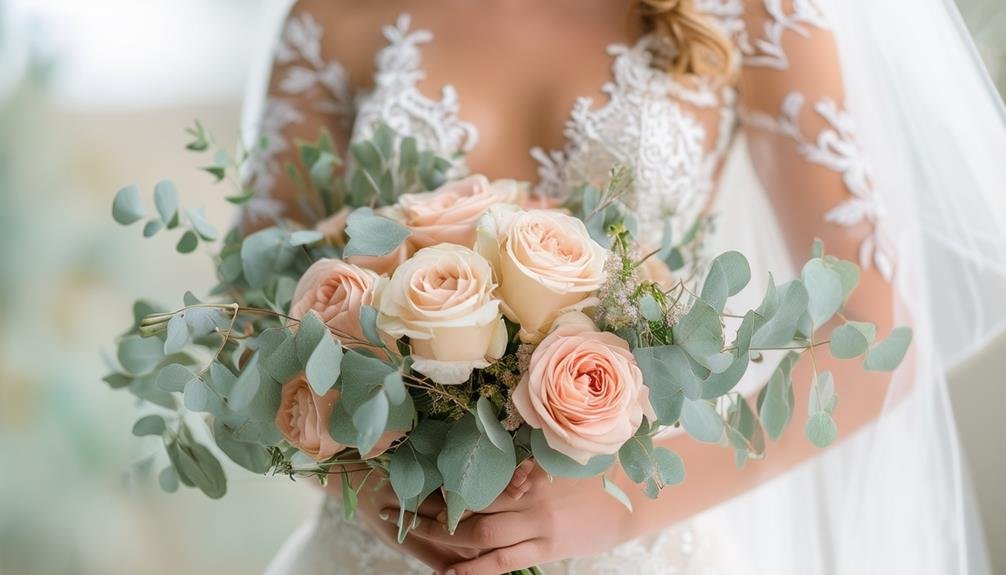Key Takeaways
- Brides use flowers in bouquets to symbolize love, happiness, and fertility.
- Floral traditions at weddings convey emotions and cultural significance through symbolic arrangements.
- Bouquets historically served as protection against evil spirits and represented well-being.
- Bridal bouquets are romantic gestures deeply rooted in history and tradition.
- The tradition of tossing the bouquet symbolises good luck, fortune, and future marriage.
Historical Origins of Bridal Bouquets
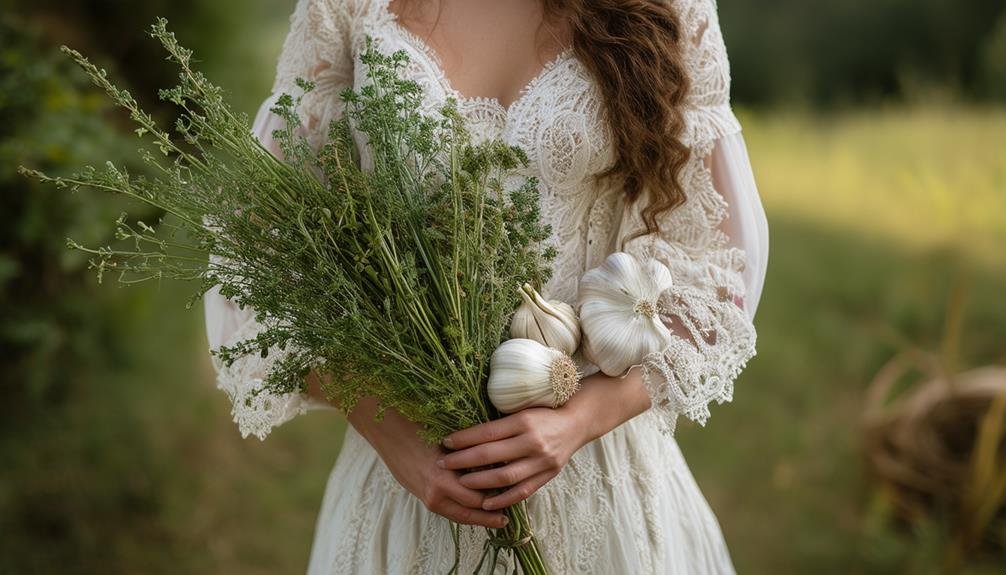
The Cultural Significance of Ancient Bridal Bouquets
- Historical Roots: Dating back to ancient times, women carried herb and spice bouquets for ceremonial and practical purposes.
- Symbolism: Herb and spice bouquets symbolised fertility, new beginnings, and protection against evil spirits, with dill bouquets representing fertility and new chapters in life.
- Practical Use: These bouquets were not just ornamental; they were also used in feast traditions, chopped up, and shared after wedding ceremonies.
- Evolution of Bouquets: The colours and arrangement styles of bouquets evolved over time, gaining symbolic significance to convey messages of love, luck, and good fortune.
- Flower Girls: Historically, flower girls carried wheat sheaves symbolising growth and prosperity, adding a touch of tradition and symbolism to the wedding ceremonies.
Symbolism Behind Bridal Flowers
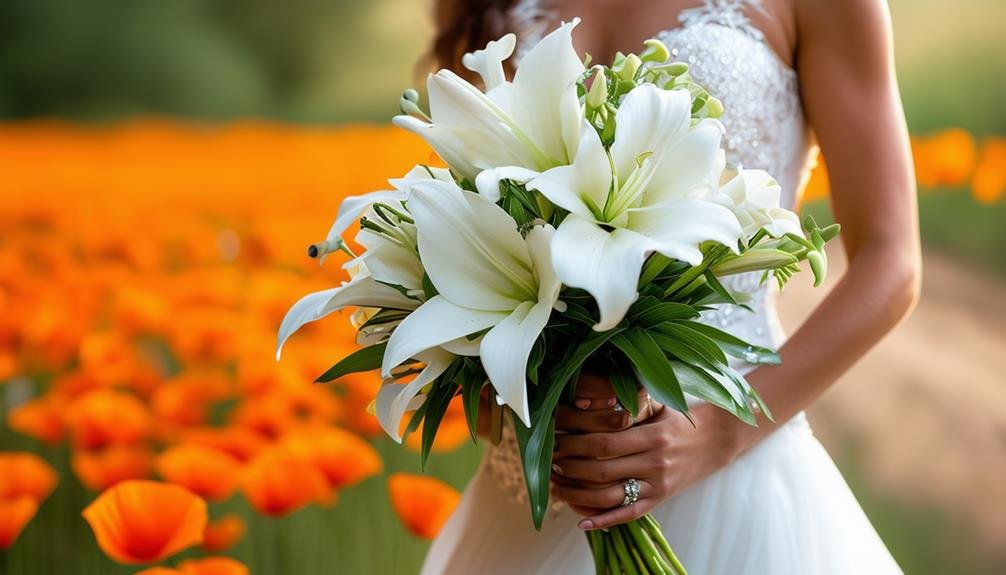
The Symbolism of Bridal Flowers
Floral Significance in Weddings: Floral traditions in weddings date back centuries, symbolising themes like fertility, fidelity, and new beginnings. In ancient Roman culture, flowers were used to honor the goddess of love and marriage, establishing a deep-rooted connection between flowers and matrimonial celebrations. Meanings Behind Blooms: Each flower in a bridal bouquet holds its own unique significance. For instance, roses symbolise love, while peonies represent happiness. These carefully chosen blooms are not just decorative; they serve as meaningful symbols conveying specific sentiments and emotions on the special day. Historical Customs and Cultural Significance: The use of botanical symbols in weddings goes beyond mere ornamentation. It reflects historical customs and cultural practices, such as the Middle Ages tradition of using fragrant herbs to ward off evil spirits. Bridal bouquets continue to embody these traditions, adding a layer of depth and meaning to the bride’s ensemble. Emotional Connections and Romantic Gestures: Floral arrangements in weddings are not just for aesthetic purposes; they also serve as romantic gestures deeply rooted in history. They symbolise love, protection, and joy, echoing the age-old practice of using flowers to convey emotions and sentiments during this significant occasion.Protective Role of the Bridal Bouquet
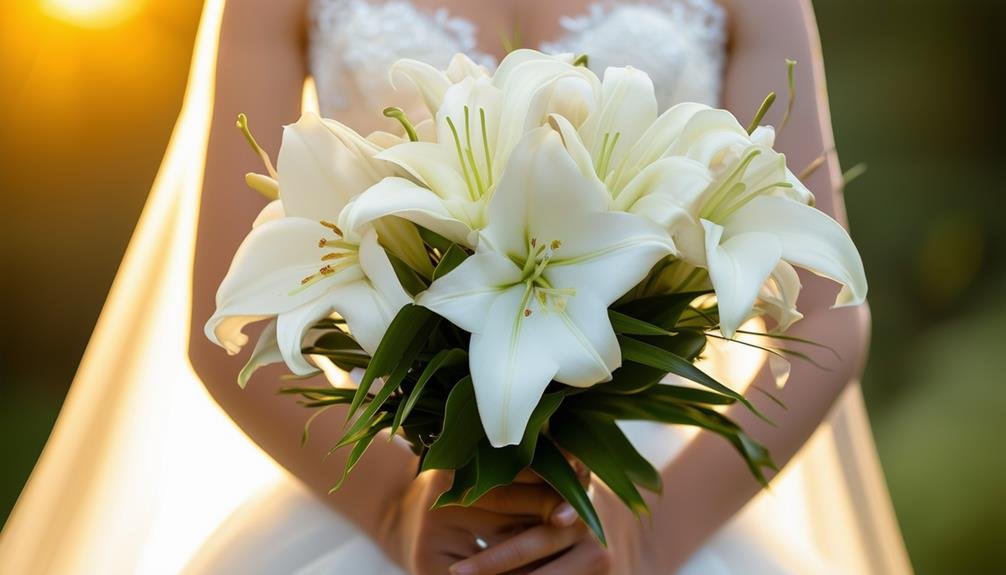
- Ancient Beliefs in Floral Safeguards
- Symbolic Herbs for Botanical Protection
- Folklore Roots of Protective Bouquets
- Warding Off Evil Spirits
- Ensuring a Harmonious Ceremony
- Historical Customs for Bride’s Well-Being
- Symbol of Spiritual Protection
- Ensuring Bride’s Safety During Sacred Union
- Tool for Bride’s Well-Being
- Shield Against Harm
- Symbol of Protection and Safety
Evolution of Bouquet Meanings
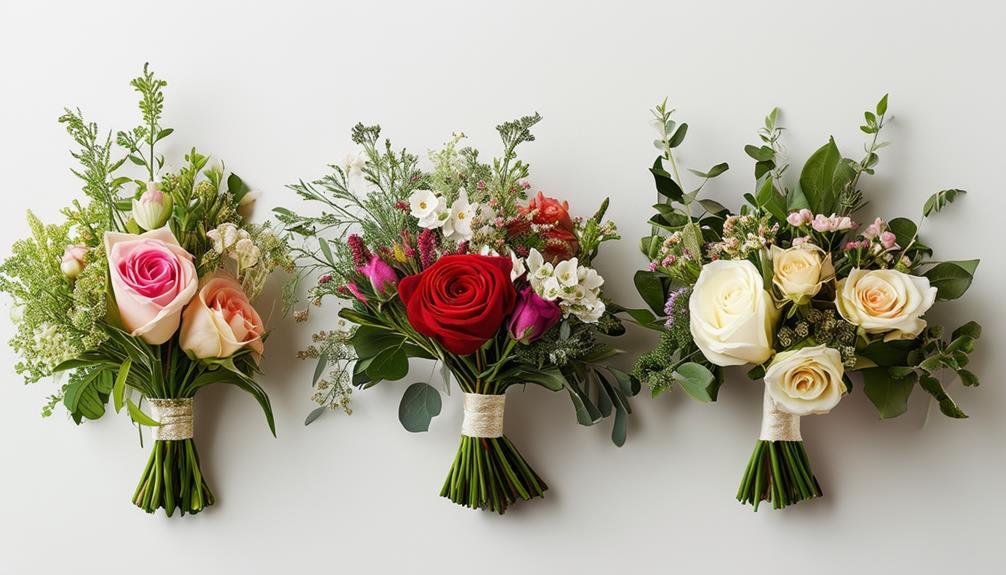
- Ancient traditions of carrying herbs and spices for protection
- Transformation into carriers of emotional meanings
- Banishing evil spirits and bringing good luck
- Bouquets gaining symbolic significance in the Victorian era
- Different blooms representing traits like purity, love, and happiness
- Language of flowers conveying deep emotions and messages
- Essential role of bouquets in wedding symbolism today
- Reflecting cultural significance and personal values
- Modern interpretations blending tradition with contemporary flair
- Meticulous flower selection for aesthetic appeal and emotional connections
- Creating modern interpretations with sentimental value
- Each bouquet embodying romantic symbolism of the couple’s love story
Do Brides Carry Specific Flowers for a Symbolic Reason?
Yes, brides do carry specific types of wedding flowers for symbolic reasons. For example, roses symbolize love and passion, while lilies represent purity and virtue. Each flower holds its own special significance, allowing the bride to personalize her bouquet with flowers that hold deep meaning for her special day.
What Flowers Are Traditionally Carried by Brides?
Peonies in wedding bouquets are a popular choice for brides. Their lush, romantic blooms add a touch of elegance to any bridal arrangement. These flowers symbolize prosperity, good fortune, and a happy marriage, making them a meaningful addition to the bride’s special day.
What Are the Traditional Reasons for Brides to Carry Flowers?
Brides have carried flowers for centuries, symbolizing fertility and new beginnings. The tradition continues today, with the most popular wedding flowers being roses, lilies, and peonies. These flowers add beauty to the bride’s ensemble and bring a sense of romance and elegance to the ceremony.
Significance of Bouquet Toss Tradition
